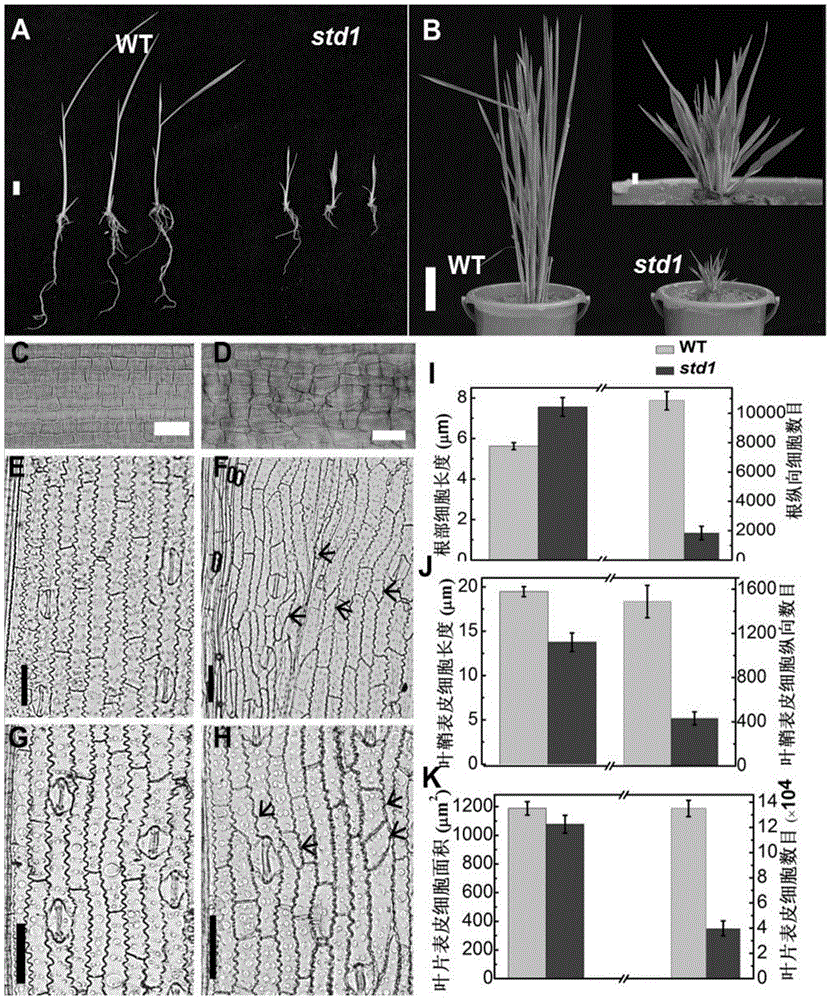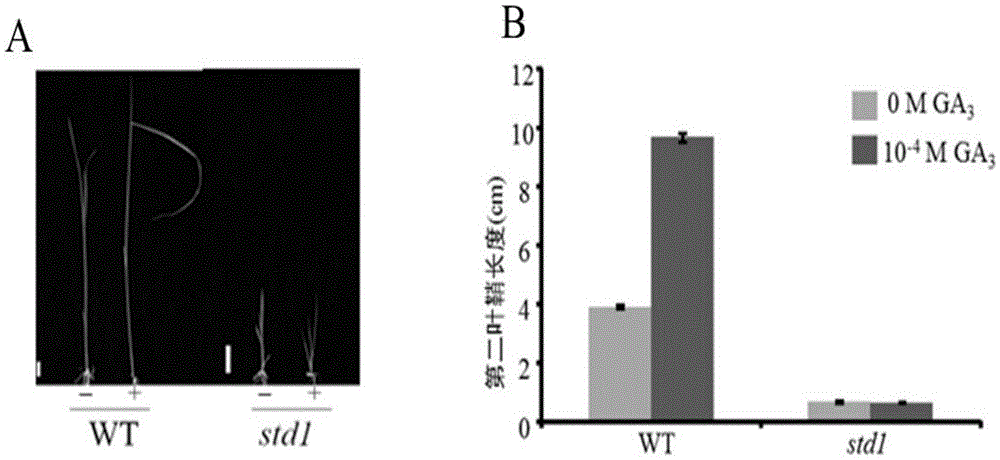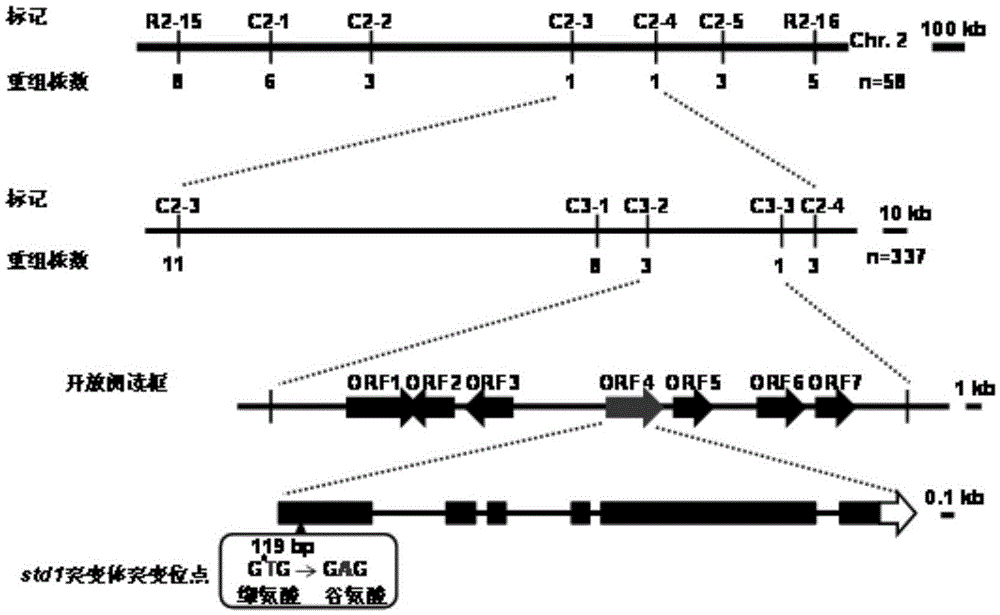Rice STD1 gene, encoding protein and application thereof
A gene and rice technology, applied in the field of its encoded protein and its application, rice extreme dwarf gene STD1, can solve the problem of stagnant yield potential of dwarf varieties
- Summary
- Abstract
- Description
- Claims
- Application Information
AI Technical Summary
Problems solved by technology
Method used
Image
Examples
Embodiment 1
[0027] The acquisition and phenotype analysis of embodiment 1 mutant
[0028] The japonica rice variety F2-285 induced by γ-ray irradiation was screened to obtain the extremely dwarf and stemless mutant std1 (stemless and severely warfed1), which has many changes in phenotype compared with the wild type F2-285. At the seedling stage, stems and taproots of std1 mutants were severely suppressed ( figure 1 A). During vegetative growth, the std1 mutant did not elongate the stem but its leaves continued to increase ( figure 1 B). The morphology of root, leaf sheath and leaf epidermal cells of std1 mutant was observed. The epidermis cells of wild-type roots, leaf sheaths and leaves were arranged in regular rectangular longitudinal parallel ( figure 1 C, 1E, 1G). In contrast, the epidermal cells in these parts of the std1 mutant were irregular in size, shape, and arrangement. In addition to rectangular cells, there were also a large number of trapezoidal, triangular, and diamond...
Embodiment 2
[0030] The relationship between dwarfing and GA of embodiment 2std1 mutant
[0031] In order to further clarify whether the dwarfing of std1 mutants is related to gibberellin (GA) synthesis or signal transduction pathway, 10 –4 MGA 3 The rice seedlings were treated for 2 weeks, and the length of the second leaf sheath of the wild type and mutants were measured before and after treatment. GA 3 After treatment, the length of the second leaf sheath of the wild type was significantly increased, but the length of the second leaf sheath of the mutant was not significantly changed, which indicated that the std1 mutant did not respond to GA signals ( figure 2). Mutants in GA signal transduction have been reported so far, such as extreme dwarf mutants gid1 and gid2, both of which have broad, dark green leaves, while the std1 mutant has a significantly different phenotype, and the growth of the mutant is inhibited It is caused by defects in other developmentally or cytologically im...
Embodiment 3
[0032] The acquisition of embodiment 3 rice STD1 gene
[0033] The std1 mutant in the heterozygous state was crossed with the indica variety Dular with normal phenotype and high polymorphism, and the segregation of mutant traits was observed by sowing in the second season after F1 was harvested. The analysis of the lines with segregated traits in the F2 generation showed that the segregation ratio between normal and mutant plants was 3:1, which indicated that the mutant traits were controlled by a pair of recessive genes.
[0034] Using 58 mutants of F2 as materials, using 170 Indel markers evenly distributed on the 12 chromosomes of rice, the candidate gene was located on the long arm of the second chromosome, linked to Indel markers C2-3 and C2-4 ( image 3 A). In order to fine-map the gene, the mapping population was expanded to 337 F2 mutant individuals, and new InDel markers C3-1, C3-2 and C3-3 were developed between C2-3 and C2-4, and it was found that Markers C3-2 and...
PUM
 Login to View More
Login to View More Abstract
Description
Claims
Application Information
 Login to View More
Login to View More - R&D
- Intellectual Property
- Life Sciences
- Materials
- Tech Scout
- Unparalleled Data Quality
- Higher Quality Content
- 60% Fewer Hallucinations
Browse by: Latest US Patents, China's latest patents, Technical Efficacy Thesaurus, Application Domain, Technology Topic, Popular Technical Reports.
© 2025 PatSnap. All rights reserved.Legal|Privacy policy|Modern Slavery Act Transparency Statement|Sitemap|About US| Contact US: help@patsnap.com



